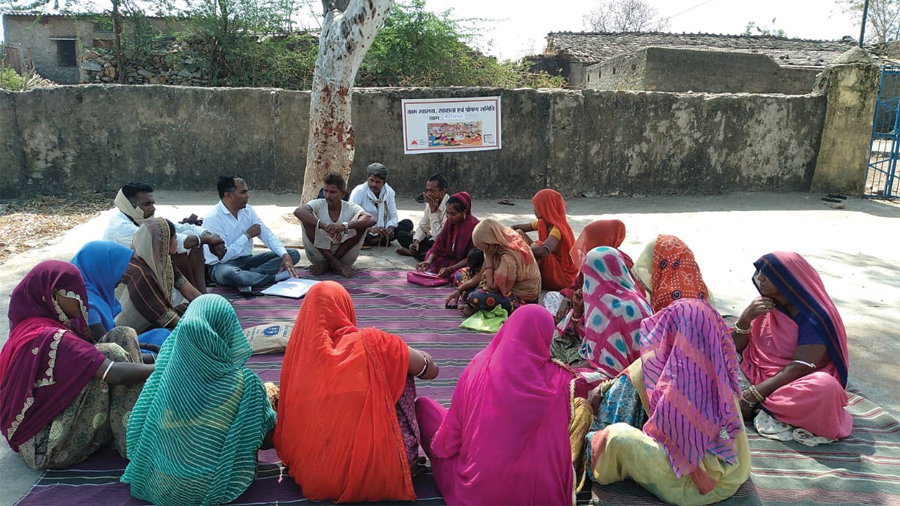Aspur Block: Community Health through Change in Women’s Participation in VHSNCs
This blog is part of the series of blogs on Aspur Project under the Primary Healthcare Initiative (PHI), a partnership between Basic Healthcare Services and Centre for Healthcare.
The Alma Ata declaration of 1978 promoted the need of community involvement in health. Community engagement helps bridge the gap between the community’s health priorities and available healthcare services. In recent years it has become evident that improvement in the health status of the community starts with the “community” itself. In 2005, NRHM introduced the concept of formation of VHSCs (Village Health and Sanitation committee). Later on, these came to be known as VHSNC, where nutrition was also brought within the purview of these committees. The aim was to improve community engagement in the issues related to health, sanitation, and nutrition of the vulnerable communities. Over the years, committees were formed in the revenue villages but somehow the motivation to keep these committee functional was low. At places where the committees received external push from a local NGO working for the betterment of the community, a torch to bring about the changes in sanitation, health and nutrition of the community was lit and it survived for a longer duration but when the support was withdrawn, the flame flickered out gradually. Even the participation of women (not only physically but also vocally) was not enough during the early days and like other committees it was male dominated. Outspoken women faced resistance back home.
Now the times have changed, as it is being said “India badal raha hai” [India is changing], we are seeing “Bharat” also changing. As part of a BHS-IIMU CFH team studying the effectiveness of strengthening community engagement in health determinants in Aspur block of Dungarpur district in Rajasthan, I visit these villages frequently and converse with the ASHAs, committee members and our Health Mitras. Now who are these Health Mitras? They are members of the community who are vocal, empathetic, fearless, and ready to serve the community. They are the ones who are helping ASHAs arranging the meetings, bringing out challenges faced by the community in different hamlets and even writing applications to concerned officials, taking a lead to meet the officials with committee members.
I could see many women participating in these committees and raising their issues. They are demanding their rights; right to clean drinking water from a tap in their homes (a very basic thing which is rare in villages), services of ANMs at their sub-centres, respectable maternal care and delivery services in the nearby health centres, immunization for their children, proper roads, streetlights and so on. These women are regularly attending the meetings, taking out time from their daily schedule and wanting a change for betterment in their lives. It is easy to forget that these women have a lot of work to do as compared to their peers in the cities and towns; apart from the basic chores of cooking, washing, and cleaning, they do farming, take care of their cattle, fetching water from solar pumps, among others. They are short of time, but they are gradually awakening. They want to see the change in their lives, demand for necessities for these ignored population. And there is no better way to demand from a platform created by the government itself.
The Health Mitras are gradually bringing about change by keeping up the motivation of the VHSNCs, through bringing together the community members for collective action by themselves (self-help is the best help in many circumstances), and by collectivizing to demand services from government.
